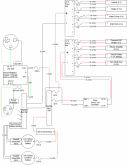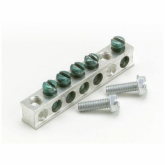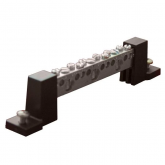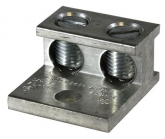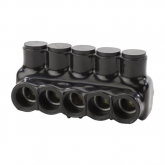As I design my system I've realized that my negative bussbar will have more connections than it has posts. The situation:
I was going to use a Maxibus buss bar with six posts. The connections it needs to make:
1) Ground Wire (From Victron Multiplus)
2) DC Negative (From Victron Multiplus)
3) DC Negative (From 12 V Fuse Box)
4) DC Negative (From 24 V Fuse Box)
5) Chasis Bond
6) Shunt-Based Battery Monitor (which then goes to the batteries)
7) Solar input (when I add that...which is not yet)
8) Surge Protector
So I've got six posts and eight inputs on the negative bussbar and I'm not sure what to do about it.
One thought is to use something like this Mofeez Bussbar, but it seems like I have at least four connections that might carry large loads and which probably require a thickish post for the connection, not a connection with a simple screw (is this a thing? Am I making up a problem that doesn't exist?). There are three "posts" on this bussbar, so...maybe not enough? Or could I double up the DC negative and Ground Wire from the Victron on a single post?
Another thought is to just keep using the Maxibus and double up a few connections. Is this a problem?
I'm just not sure what I should be doing. Thoughts?
I was going to use a Maxibus buss bar with six posts. The connections it needs to make:
1) Ground Wire (From Victron Multiplus)
2) DC Negative (From Victron Multiplus)
3) DC Negative (From 12 V Fuse Box)
4) DC Negative (From 24 V Fuse Box)
5) Chasis Bond
6) Shunt-Based Battery Monitor (which then goes to the batteries)
7) Solar input (when I add that...which is not yet)
8) Surge Protector
So I've got six posts and eight inputs on the negative bussbar and I'm not sure what to do about it.
One thought is to use something like this Mofeez Bussbar, but it seems like I have at least four connections that might carry large loads and which probably require a thickish post for the connection, not a connection with a simple screw (is this a thing? Am I making up a problem that doesn't exist?). There are three "posts" on this bussbar, so...maybe not enough? Or could I double up the DC negative and Ground Wire from the Victron on a single post?
Another thought is to just keep using the Maxibus and double up a few connections. Is this a problem?
I'm just not sure what I should be doing. Thoughts?



